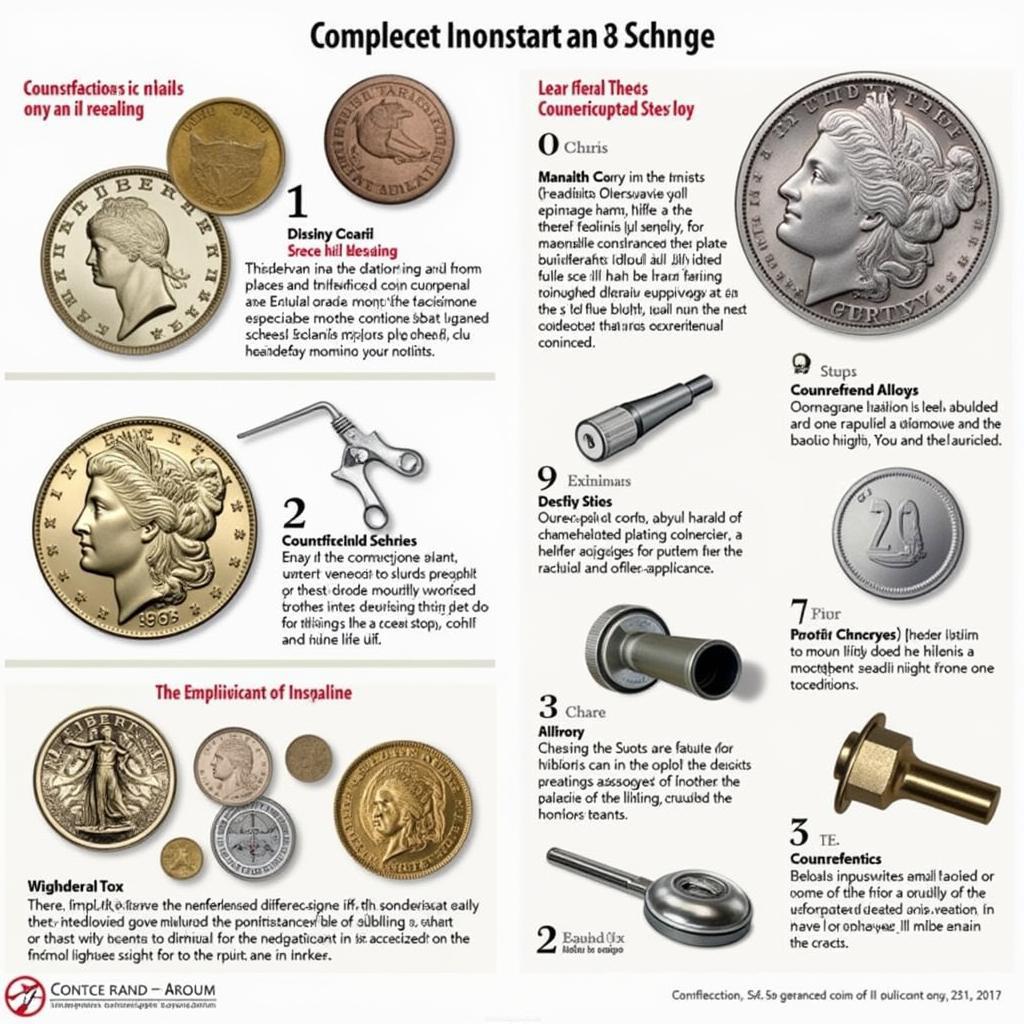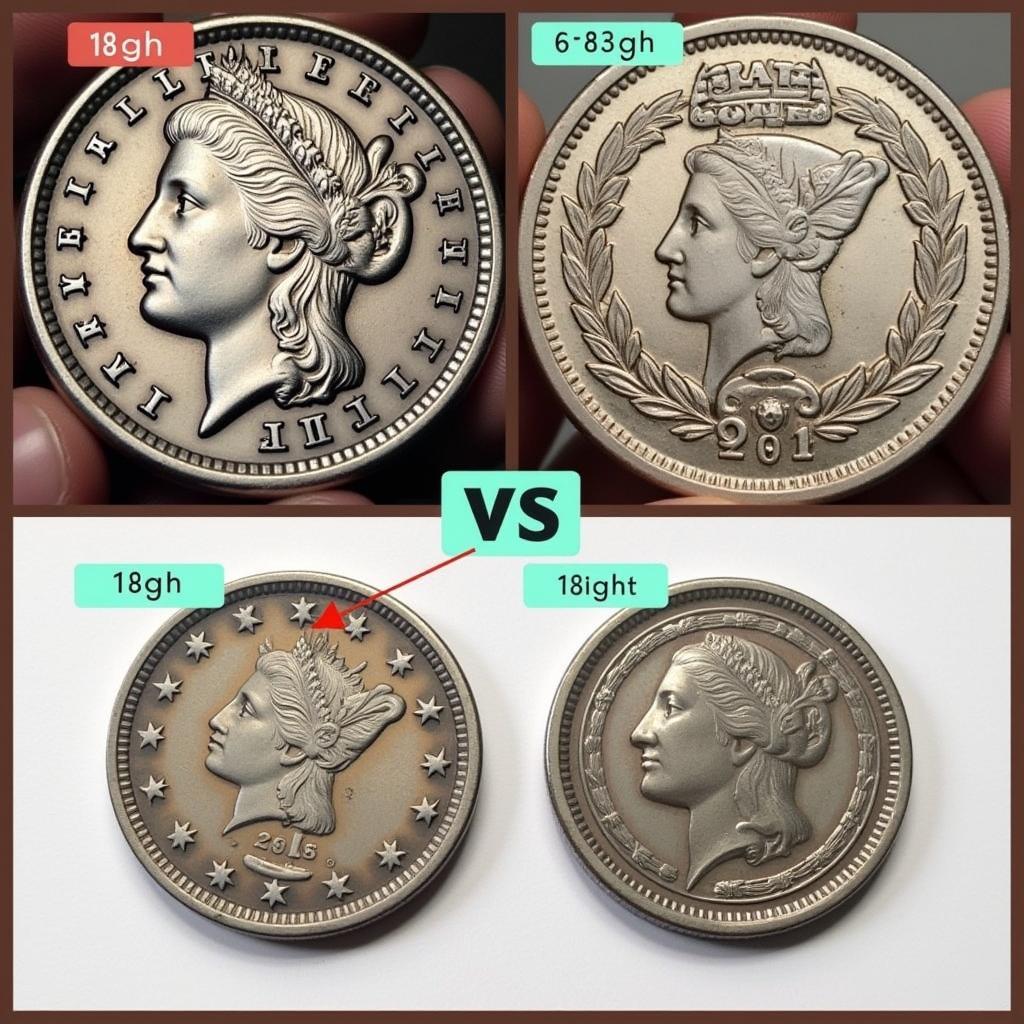Counterfeit coins have been around almost as long as real currency. Understanding what metals are used for fake coins is crucial for collectors and anyone handling money. The materials used range from common metals like zinc and lead to more sophisticated alloys designed to mimic the weight and feel of genuine coins.
Common Metals in Counterfeit Coins
Several metals are frequently employed in the creation of counterfeit coins. These metals are often chosen for their availability, low cost, and ease of manipulation. Some of the most common include:
- Zinc: A relatively soft metal, zinc is easy to cast and plate, making it a popular choice for counterfeiters.
- Lead: Another soft, dense metal, lead can provide a similar weight to genuine coins. However, its softness also makes it prone to wear and tear, often revealing the counterfeit nature quickly.
- Copper-plated Zinc: This combination attempts to replicate the look and feel of copper coins while keeping costs low. The thin copper layer can wear off, exposing the zinc underneath.
- Pewter: An alloy primarily composed of tin, pewter can be molded easily and offers a silvery appearance, sometimes used to imitate silver coins.
Identifying Fake Coins: Beyond the Metal
While knowing the metals used in counterfeit coins is helpful, it’s not the only factor in identifying them. Other key indicators include:
- Weight: Fake coins often have a noticeably different weight compared to genuine ones.
- Appearance: Look for inconsistencies in the design, lettering, or edges.
- Sound: The sound a coin makes when dropped can also be a telltale sign. Genuine coins usually have a clearer, more resonant ring.
- Magnetic Properties: Most genuine coins aren’t magnetic, while some counterfeit ones might be.
Sophisticated Counterfeiting Techniques
Counterfeiters are constantly evolving their techniques. Some use more sophisticated alloys designed to closely mimic the properties of genuine coins. They may also employ advanced plating methods to create a convincing facade.
 Advanced Counterfeiting Techniques
Advanced Counterfeiting Techniques
Why Choose These Metals?
The choice of metal often comes down to cost-effectiveness and ease of manufacturing. These metals are readily available and relatively inexpensive. Their malleability makes them easy to shape and mold into the desired form.
What are the legal implications of making fake coins?
Creating counterfeit currency is a serious crime with significant legal ramifications, including hefty fines and imprisonment.
Can you tell me more about the history of counterfeiting?
Counterfeiting has existed for centuries, evolving alongside currency itself. From crude imitations to sophisticated reproductions, the history of counterfeiting is a fascinating reflection of the ongoing battle between those who create money and those who seek to replicate it.
Conclusion
Understanding the “Metal Used For Fake Coins” is crucial for collectors and anyone handling currency. While common metals like zinc and lead are often used, counterfeiters are constantly adapting their techniques. By being aware of the materials and methods used in counterfeiting, we can better protect ourselves from falling victim to this illegal practice. Remember to check the weight, appearance, and sound of coins, and if you’re unsure, consult a numismatist or expert.
FAQ
- What is the most common metal used in counterfeit coins? Zinc is often used due to its low cost and ease of manipulation.
- How can I tell if a coin is counterfeit? Look for inconsistencies in weight, appearance, and sound.
- Are all counterfeit coins magnetic? No, but some are, while genuine coins typically aren’t.
- What are the penalties for counterfeiting? Counterfeiting is a serious crime punishable by fines and imprisonment.
- Where can I get a coin authenticated? A reputable coin dealer or numismatist can help authenticate coins.
- What metals are used in genuine coins? This varies depending on the country and denomination, but commonly includes gold, silver, copper, and nickel.
- Are there any online resources for identifying counterfeit coins? Yes, several websites and forums provide information and resources for coin collectors.
 Identifying Counterfeit Coins
Identifying Counterfeit Coins
Kêu gọi hành động: Khi cần hỗ trợ hãy liên hệ Số Điện Thoại: 0372960696, Email: [email protected] Hoặc đến địa chỉ: 260 Cầu Giấy, Hà Nội. Chúng tôi có đội ngũ chăm sóc khách hàng 24/7.

